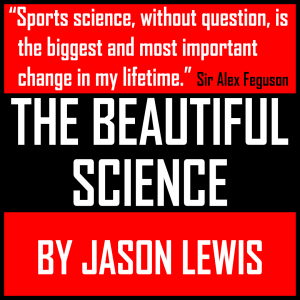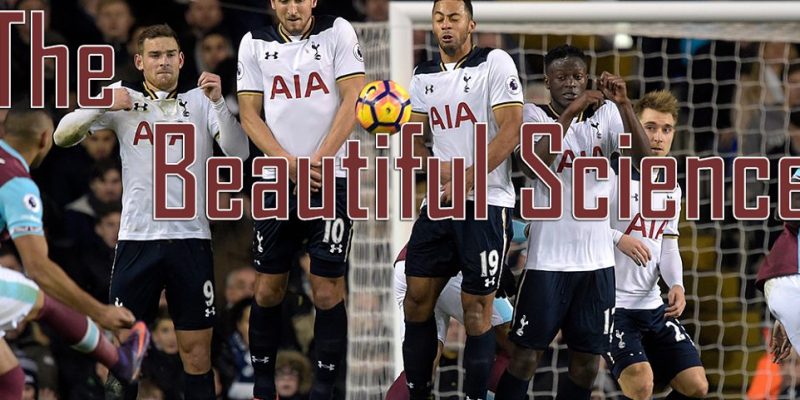A looping corner makes its way to the far post. The big number nine has got the run on his man. He out jumps the sprawling goalkeeper. The football drifts into the empty net. Goal. All goes black. An identical ball is played into the box. Once more the forward looks certain to meet the ball with his head. This time however the keeper has stayed at home. He catches the tame goalbound effort. He then removes his VR headset and joins the rest of his teammates for training.
This is the power VR can have on coaching in football and it will be a common practice in the very near future. Ben Smith, CEO of VR company Laduma, has delivered a strong prediction. “In 2017 we can expect to see Premier League clubs using VR in training. Some are already starting to explore it heavily.”
Clubs at the highest level already implement countless practices to maximise the performance of their players. From sleep patterns to saliva testing, cryotherapy chambers to calorie counts; no stone is left unturned in the pursuit of excellence.

VR may be able to expand on clubs’ use of video analysis and if employed tactfully could enhance this area of sports science, much like GPS has built on the principles of monitoring heart rate.
Video analysis has been a staple of the weekly diet for football teams, but Smith feels VR could be just as valuable. “There is always going to be the push for what is next in terms of finding a gain that others aren’t doing.
“If a coach of a football team can go through training in a 360-degree environment that can be vital as they cannot get that whilst running the session.”
With players’ fitness and time both prized commodities Smith identified a key strength of VR. “For sports teams there is never enough time for players on the field.
“If you create a way that helps players improve their awareness, decision making and positioning, all without risking injury then that is a huge benefit in the race for marginal gains.”
Both sides of the pond
The search for marginal gains runs deep in American sport and it is also the country that is leading the way with VR. STRIVR Sports Lab has partnerships with a number of American football teams who are already using VR.
VR will change the way soccer players prepare for matches and it’s only a matter of time until VR becomes another staple part of training.
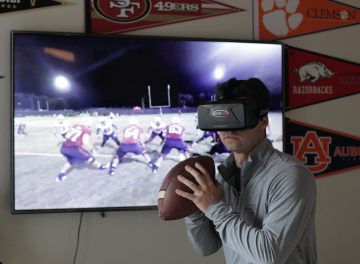
Danny Belch heads up STRIVR’s football specific department and admits that the most popular sport in the world poses a different challenge for VR. “The biggest hurdle with soccer (football) is the fluidity of the game. It is unlike American Football where there is a pause and the play starts from a static position. Very few times in soccer does this happen, which makes building VR training scenarios challenging.”
Despite this, Belch is still confident that VR could help clubs to reach new heights in terms of performance. “VR will change the way soccer players prepare for matches and it’s only a matter of time until VR becomes another staple part of training.”
A step too far
However, could this be damaging to the very beauty of sport? Exchanging the creativity and flair that gets fans off their seats, for pre-rehearsed routines that are practiced until they become second nature?
Moreover, are players now being wrapped in cotton wool with attempts to avoid injury leading to their workloads being determined by data?
Mark Armitage, a strength and conditioning consultant for the FA, can see a case for this impacting on footballers’ development. “It (sports science) could have a negative impact on players learning their trade. An example would be set piece specialists. I have seen cases where players want to do extra training but it is decided they can’t because of load management.”
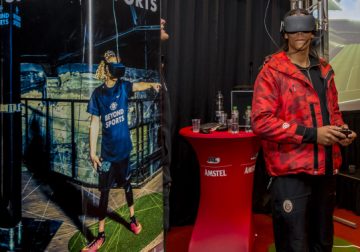
Our job is not stopping the players from training, but trying to optimise the way that they train and ensure it is at the right times. It’s not how much, it’s how well.
Whilst this is a potential barrier in producing talented footballers, Armitage believes this can be overcome. “Players obviously need to spend a large proportion of their time on the grass, especially at a younger age to learn the complexities that you need to become a top player.
“Our job is not stopping the players from training, but trying to optimise the way that they train and ensure it is at the right times. It’s not how much, it’s how well. We’ve got to get players to train smarter, not necessarily harder.”
Money talks
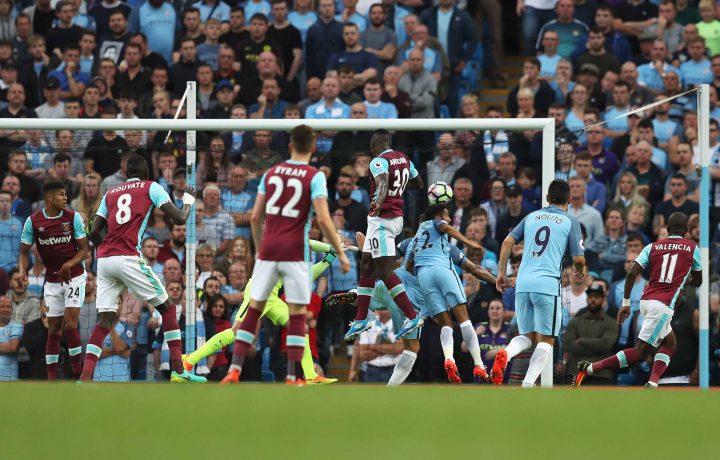
Year-on-year the financial rift separating the Premier League and the Championship, let alone League One and Two, widens beyond compare.
Does VR therefore drive a further wedge between the lower ends of the Football League and the riches of the Premier League?
In an exclusive poll fans certainly feel this way with 73% agreeing with the statement that sports science is widening the gap between those at the top and those at the lower ends of the professional football pyramid.
However, Nick Harvey, a strength and conditioning coach, who currently works with the England Under 21s squad, feels this perceived gap is not an honest reflection of the industry. “You would think that the gap would be massive. Clubs collect so much, but don’t use it effectively and still have not nailed down the basics.
“There is so much you can do without money. You don’t necessarily need all those resources if you have got a good philosophy, training plan and your players are committed to doing the work and recovering well. That is far more important.”
At the moment football and marginal gains do not go together. Until players are as strong and as fit as they can be then marginal gains should not come into it.
Keeping it simple
On the subject of marginal gains – the pursuit of one or two percent of improved performance – Harvey feels the sport is nowhere near such fine margins. “At the moment football and marginal gains do not go together. Until players are as strong and as fit as they can be then marginal gains should not come into it.”
It comes back to the fundamentals for Harvey, having worked in football for over fifteen years. “As coaches we should be looking to commit to sound strength and conditioning work. This should outweigh cryo chambers and all this technology.”
While the adoption of technology in football may split fan and practitioner opinion, VR looks set to be the next landmark step in the sport’s scientific evolution.
There is a feeling from coaches and fans alike that when focused correctly sports science can be positive. It is now in the hands of the technology industry to offer clubs a new reality.
To read the full print version of the article click here
For more on The Beautiful Science:
Watch – The role of sports science day-to-day in a Premier League club
Listen – The technology in football debate with two leading practitioners
Learn – Travel through time to see the progression of sports science in the beautiful game
Survey – Find out what the fans think of the growing field of sports science and use of technology in football
Play – See if you can handle the life in the week of a professional footballer in Be the Player
